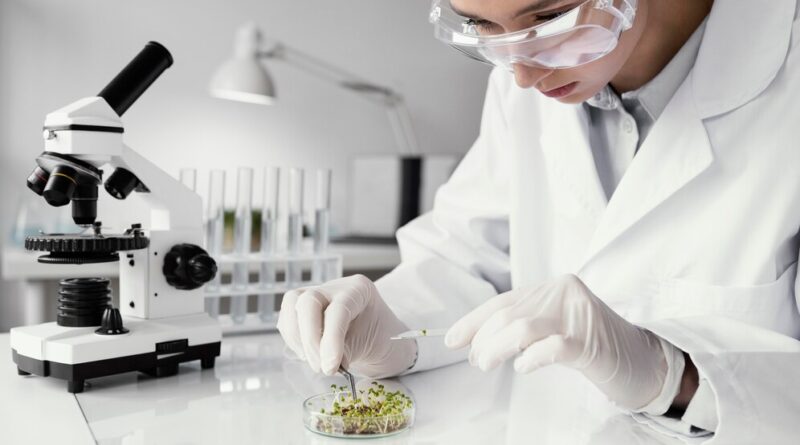What is Protein A in Chromatography?
Protein A is a crucial component in the field of protein purification, particularly in the context of chromatography. It is derived from the bacterium Staphylococcus aureus and is widely used in laboratories and industrial settings for its ability to selectively bind antibodies. In this blog, we will explore what Protein A is, how it functions in chromatography, particularly in Protein A chromatography resin, its applications, and its significance in modern biochemistry.
Understanding Protein A
Protein A is a cell wall protein produced by Staphylococcus aureus. Its primary function is to bind to the Fc region of immunoglobulin G (IgG) antibodies. This strong affinity makes Protein A an invaluable tool for isolating antibodies from complex mixtures. The ability of Protein A to selectively capture antibodies is the foundation for its application in Protein A resins, which are commonly used in affinity chromatography.
Mechanism of Action
The mechanism behind Protein A’s functionality lies in its structure. Protein A has multiple binding domains that interact with the Fc region of antibodies. When utilized in Protein A chromatography resin, the following steps illustrate how Protein A facilitates the purification process:
Column Preparation: The chromatography column is packed with Protein A resin and equilibrated with a suitable buffer. This buffer ensures that the pH and ionic strength are optimal for binding.
Sample Introduction: The sample containing the target antibodies is introduced to the column. Antibodies present in the sample will specifically bind to the Protein A immobilized on the resin.
Washing: After the sample is applied, unbound proteins and impurities are washed away using a buffer solution. This step is essential for achieving a high purity level.
Elution: To recover the bound antibodies, the elution buffer alters the conditions (often changing the pH or ionic strength) to disrupt the binding interaction between the antibodies and Protein A, allowing for the collection of purified antibodies.
Regeneration: The resin can be regenerated and reused, making Protein A chromatography resin a sustainable and cost-effective option for large-scale antibody production.
Why Use Protein A Chromatography Resin?
Using Protein A resins in chromatography offers several advantages:
High Specificity: Protein A’s selective binding to the Fc region of antibodies allows for the efficient purification of target proteins, minimizing contamination from other molecules in the sample.
High Binding Capacity: Protein A chromatography resin is designed to maximize the binding capacity of antibodies, leading to higher yields of purified proteins.
Cost-Effectiveness: Once the resin is properly regenerated, it can be reused multiple times, reducing the overall cost of the purification process.
Compatibility: Protein A resins can be used in various chromatography systems, making them adaptable for different applications, from small-scale research to large-scale industrial production.
Applications of Protein A in Chromatography
The application of Protein A chromatography resin spans various industries and fields, including:
Monoclonal Antibody Production: Protein A resins are extensively used in the biopharmaceutical industry for the purification of monoclonal antibodies. With the increasing demand for therapeutic antibodies, Protein A chromatography has become a standard method in large-scale production.
Research and Development: In academic and research settings, Protein A chromatography is utilized to purify antibodies for various applications, such as Western blotting, immunoprecipitation, and enzyme-linked immunosorbent assays (ELISA).
Diagnostics: Protein A resins are employed in the development of diagnostic tests that rely on antibodies for detecting specific antigens. The high purity of antibodies obtained through Protein A chromatography enhances the reliability of diagnostic kits.
Vaccine Production: In vaccine development, the purification of antibodies is critical. Protein A chromatography ensures that the antibodies used in vaccine formulations are of high quality and purity.
Limitations of Protein A Resins
While Protein A resins offer numerous advantages, there are also some limitations to consider:
Cost: The initial investment in Protein A chromatography resin can be higher than that of other chromatography media, which may be a concern for smaller laboratories or those with limited budgets.
Sensitivity to Conditions: The binding affinity of Protein A can be affected by pH and ionic strength. It is essential to maintain optimal conditions to ensure efficient binding and elution.
Limited Antibody Classes: Protein A primarily binds to IgG antibodies. It may not be effective for purifying other immunoglobulin classes, such as IgM or IgA, which can limit its versatility in certain applications.
Complexity of Covalent Coupling: The process of covalently attaching Protein A to the resin can be complex and may require optimization to achieve the desired performance.
Innovations and Future Perspectives
The field of protein purification is constantly evolving, and advancements in Protein A resins are being explored to enhance their performance and broaden their applications. Some areas of innovation include:
Hybrid Resins: Researchers are developing hybrid resins that combine Protein A with other affinity ligands, potentially expanding the range of antibodies that can be effectively purified.
Improved Binding Capacity: Ongoing research aims to enhance the binding capacity of Protein A chromatography resin, allowing for greater yields and efficiency in purification processes.
Lower Costs: The development of cost-effective alternatives to traditional Protein A resins is a priority for many companies and research institutions, aiming to make high-quality purification accessible to all.
Automation: The integration of automation in chromatography processes is gaining traction. Automated systems for Protein A chromatography can improve throughput and consistency in antibody purification.
Conclusion
In conclusion, Protein A plays a vital role in chromatography, particularly through the use of Protein A chromatography resin. Its ability to selectively bind antibodies has made it an essential tool in various fields, from research to industrial applications. While there are limitations, the advantages of high specificity, yield, and reusability far outweigh them. As the demand for monoclonal antibodies continues to grow, the importance of effective purification methods, such as those utilizing Protein A, will remain at the forefront of biochemistry. With ongoing innovations, the future of Protein A resins promises even greater efficiency and versatility in protein purification, ensuring their place as a cornerstone in the biopharmaceutical industry and beyond.

